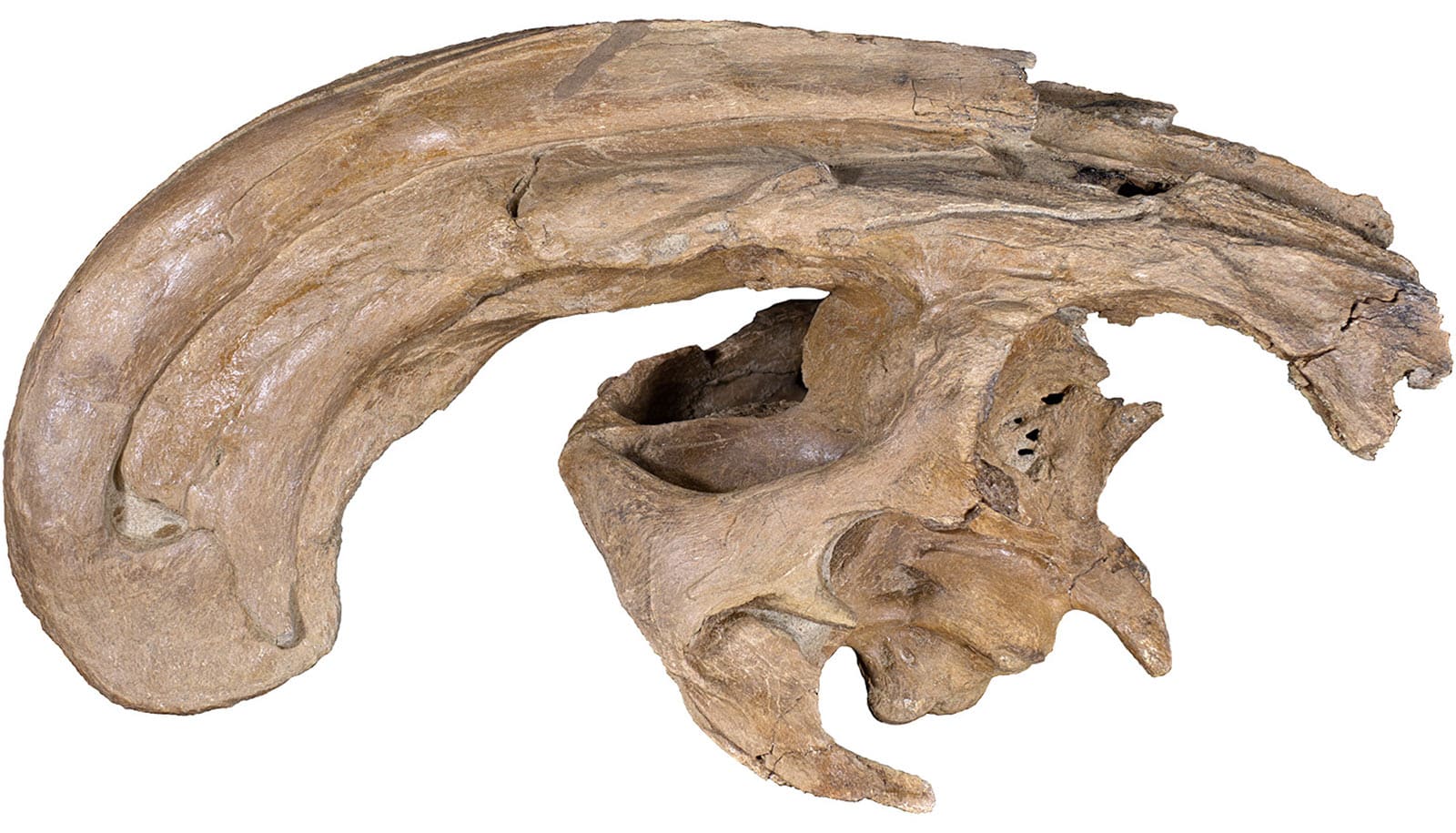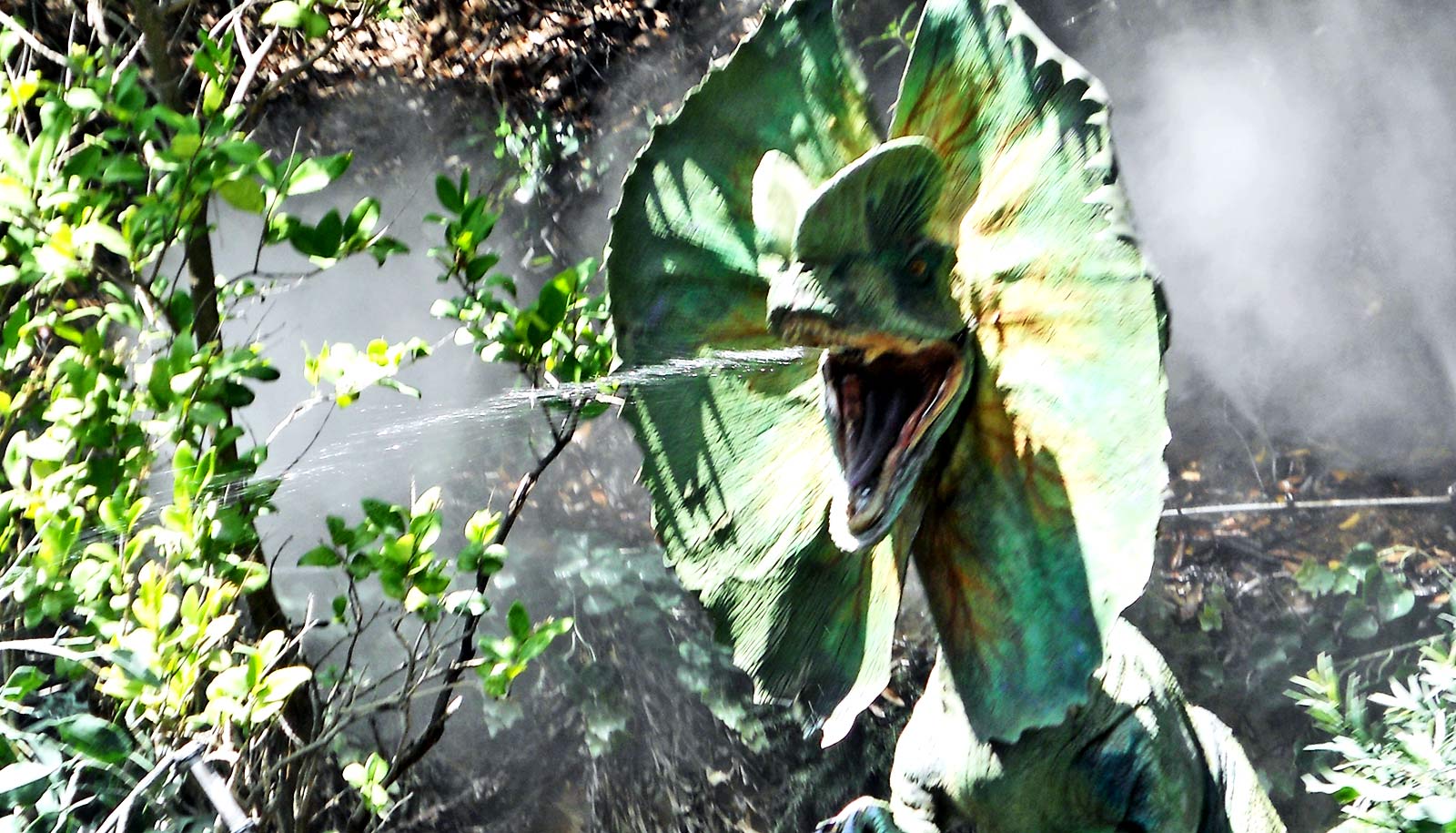A newly-discovered, exceptionally well-preserved skull of the duckbill dinosaur Parasaurolophus answers questions about its signature crest and family tree.
Parasaurolophus is instantly recognizable due to the giant crest that starts at its nose and arches back over the top of its head. But recovered specimens haven’t had skulls that preserved the iconic crest very well—until now.

The skull, recovered from the badlands of New Mexico, answers questions concerning the overall structure and function of the crest and establishes relationships between this species and other North American Parasaurolophus species.
Research on the find appears in PeerJ.
Here, Terry Gates, a paleontologist at North Carolina State University, discusses the find and what it shows about the creature’s family tree:
This skull is from a rare species of Parasaurolophus—Parasaurolophus cyrtocristatus. How many skulls from this species have been found/studied thus far?
There are only two skulls from this particular species, as far as we know right now. To add little intrigue to this answer, there are many skulls of Parasaurolophus from an area of southern Utah that do not have an identification yet.
We have been unable to identify this Utah Parasaurolophus because the species that we describe in the new paper (P. cyrtocristatus) was not adequately differentiated from the other Parasaurolophus species. Now that this has occurred, we finally can study the Utah Parasaurolophus and determine if it is from a known species or is a new species.
There are two other species of Parasaurolophus, both with long straightish crests over their head, quite distinct from that described on the species in our paper. One of the species occurs in Alberta, Canada and has only one skull, whereas the other type of Parasaurolophus occurs in the same region of New Mexico as our specimens, just a different time. There are only two skulls of this Parasaurolophus known.
What is unique about this particular skull?
The new skull we described is unique because it is so well preserved. Typically, the hollow tube that is the crest of Parasaurolophus crushes under the weight of sand and mud during the burial process, leaving many of the important details of the bones that make up the crest obscured.
Until we described this skull with its pristine preservation (not crushed), paleontologists were not sure how the crest was put together. This question has been pondered by paleontologists since 1922!
What did they use that giant tube for, anyway?
The tube crest was used for making noise. Some simple math was done 40 years ago that showed the longer the crest the lower the sound. Also, some different research showed that the ears of Parasaurolophus could hear the sounds that hypothetically would be made by the tube crest.
Though not directly verifying the usage in this way, being able to hear the sounds does support that use. We also cannot forget that these were probably also visual ornaments as well.
What does this find tell us about Parasaurolophus species in North America?
First off, this new Parasaurolophus skull helps us to firmly determine that there are at least three species of this type of dinosaur living in North America. Understanding the biodiversity of dinosaurs is important for us to know how ancient ecosystems worked.
Also, the new family tree analysis we conducted proposed that the two Parasaurolophus species found in New Mexico are more closely related to each other than either is to the species found in Alberta, Canada.
Ours is the first study to provide data for this family relationship, which is good, because it verifies some basic foundational theory of why organisms live where they do and how animals evolve.
Additional coauthors are from the Denver Museum of Nature and Science and the Royal Ontario Museum.
Source: NC State

